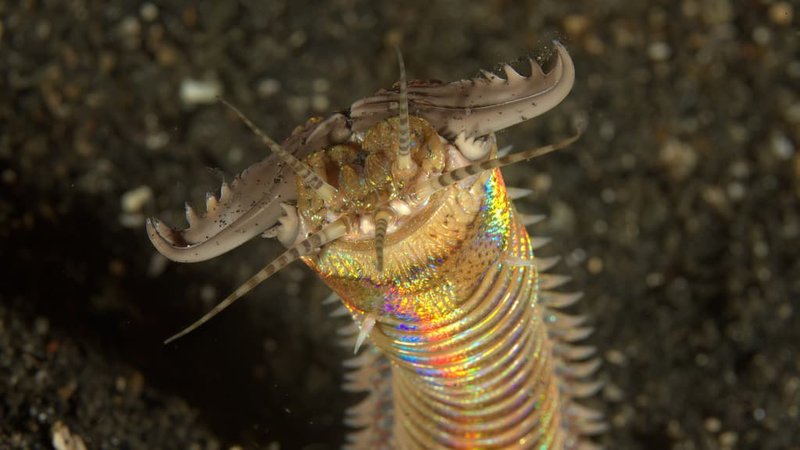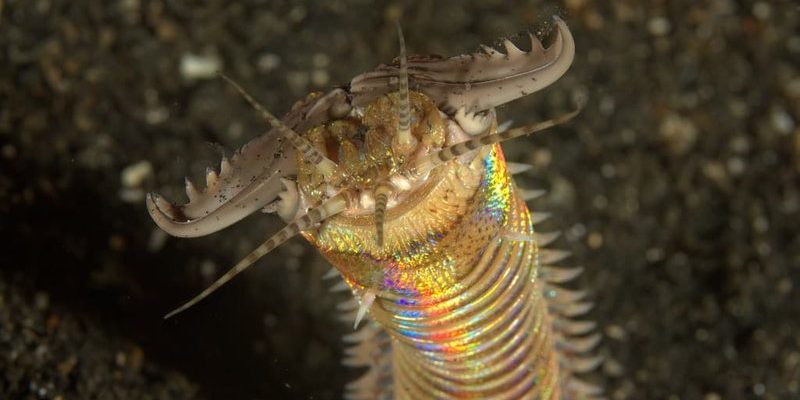
Think of the Bobbit worm like a secret agent of the reef. It blends into its surroundings, waiting patiently for the right moment to strike. Once you identify it, however, you can decide whether to keep it or find another home for this unique marine inhabitant. Let’s dive into how to identify a Bobbit worm in your reef aquarium, breaking it down step by step so you can feel confident about your underwater detective work.
What is a Bobbit Worm?
Bobbit worms, known scientifically as *Eunice aphroditois*, are fascinating yet often misunderstood creatures. These marine worms can grow quite large, with some reaching over three feet in length, although they typically hang around 10 to 12 inches in home aquariums. Their colorful bodies are usually a mix of greens, browns, and reds, and they have a segmented appearance that resembles a long, squirming noodle.
One of the most interesting features of Bobbit worms is their hunting technique. They use their sharp jaws to snap up prey, which can include fish and other invertebrates. So, you might be wondering: “Why should I care about identifying one?” Well, if you notice missing fish or invertebrates in your tank, this worm could be the culprit. Being proactive can help maintain your aquarium’s balance.
Physical Characteristics of Bobbit Worms
When it comes to identifying Bobbit worms, their appearance is key. Here are the main features to look out for:
- Body Structure: Bobbit worms have elongated, segmented bodies that can appear smooth or bristly, depending on the individual.
- Coloration: They often display vibrant hues ranging from dark brown to green and even red, helping them blend in with their surroundings.
- Head Features: Their head has two prominent antennae and several feeding tentacles, which can be mistaken for a cluster of bright, waving arms.
If you spot something long and wiggly in your tank, take a closer look. Bobbit worms typically stay partially buried in the substrate, with only their heads and tentacles visible. So don’t be surprised if you only catch a glimpse of them now and then.
Behavior and Movement
Bobbit worms are primarily nocturnal hunters, which means they’re most active at night. This behavior can make them a bit elusive, especially if you mainly observe your tank during the day. Here’s what to watch for:
- Wiggling Movement: When they come out to hunt, you might see them wriggling and extending their bodies to catch prey.
- Burrowing: During the day, they often retreat into the sand or rock, which can make spotting them a challenge.
- Feeding: If you notice small fish or shrimp disappearing, it could be a sign that a Bobbit worm is on the prowl.
If you’re looking to catch a glimpse of these worms, consider using a flashlight during your tank’s night cycle. It can be quite exciting to see what’s really going on after dark!
How to Spot a Bobbit Worm in Your Tank
To successfully identify a Bobbit worm, you’ll want to keep an eye out for certain clues. Here’s a step-by-step approach to help you spot one:
1. Observe: Spend some time watching your tank, especially at night. Look for any unusual movements or shapes among the substrate.
2. Check for Signs: If you notice missing fish or invertebrates, or if your fish seem unusually skittish, it might be a sign of a predator like a Bobbit worm.
3. Gently Move Sand or Rocks: If you suspect a Bobbit worm is present, carefully shifting some sand or rock can help reveal it. Just be sure to do this gently to avoid stressing other tank inhabitants.
4. Use Visual Aids: A flashlight can help illuminate the tank in the dark, allowing you to see hidden creatures that might otherwise be overlooked.
By following these steps, you’ll increase your chances of spotting this elusive worm, giving you a better understanding of the dynamics at play in your aquarium.
Potential Issues with Bobbit Worms
While Bobbit worms are fascinating, they can also pose challenges in a reef aquarium. Here are a few potential issues to be aware of:
- Predatory Behavior: As effective predators, Bobbit worms can eat smaller fish and invertebrates, which may disrupt the balance of your tank.
- Competition: They can outcompete other animals for food resources, leading to unhappy or unhealthy tank mates.
- Difficulty in Removal: If you decide to remove a Bobbit worm, you may encounter difficulties due to their burrowing habits and size.
It’s important to weigh these factors against the worm’s interesting characteristics. While they can be a captivating addition to your tank, they may not be suitable for all aquarists.
How to Manage Bobbit Worms in Your Aquarium
If you’ve decided that a Bobbit worm isn’t a welcome guest in your reef tank, here are some strategies for management:
1. Manual Removal: If you can locate the worm, you may be able to carefully extract it from the substrate. Use a pair of tweezers or a similar tool, and be patient.
2. Trap it: You can create traps by placing bait in a small container. Once the worm enters, you can remove the container and the worm more safely.
3. Adjust Feeding Habits: Ensure your fish are getting enough food to minimize predation. This can help balance the ecosystem, making it less reliant on a single predator.
Managing Bobbit worms can take some time and patience, but with the right approach, you can keep your aquarium thriving.
Identifying a Bobbit worm in your reef aquarium can feel like an adventure. By understanding what these creatures look like, how they behave, and potential impacts on your tank, you can make informed decisions about your aquarium’s health.
Whether you choose to embrace the presence of a Bobbit worm or opt for its removal, being aware of its characteristics will help you create a more balanced and visually engaging underwater world. Remember, every tank is unique, and understanding these fascinating creatures is part of the journey. Happy fishkeeping!

